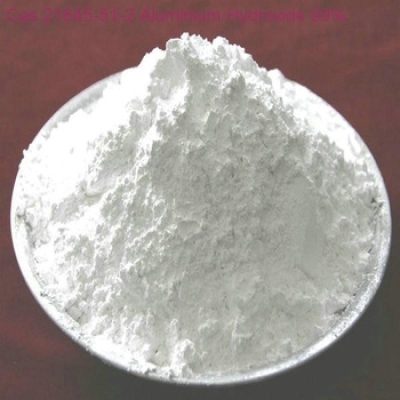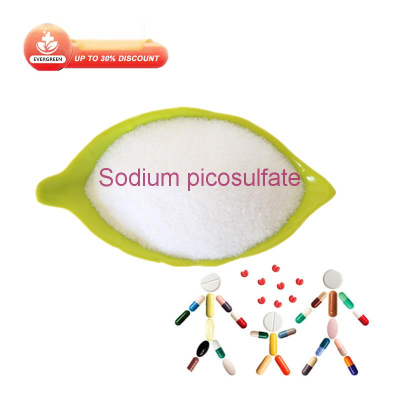-
Categories
-
Pharmaceutical Intermediates
-
Active Pharmaceutical Ingredients
-
Food Additives
- Industrial Coatings
- Agrochemicals
- Dyes and Pigments
- Surfactant
- Flavors and Fragrances
- Chemical Reagents
- Catalyst and Auxiliary
- Natural Products
- Inorganic Chemistry
-
Organic Chemistry
-
Biochemical Engineering
- Analytical Chemistry
- Cosmetic Ingredient
-
Pharmaceutical Intermediates
Promotion
ECHEMI Mall
Wholesale
Weekly Price
Exhibition
News
-
Trade Service
Introduction Primary biliary cholangitis (PBC) is a chronic intrahepatic cholestatic disease whose pathogenesis has not been fully elucidated
.
PBC is more common in middle-aged women, with insidious onset and usually asymptomatic.
Fatigue, pruritus and other symptoms may also occur, or serum alkaline phosphatase (ALP)/glutamyl transpeptidase (GGT) asymptomatically elevated
.
In February 2022, the Asia-Pacific Society for the Study of the Liver (APASL) issued guidelines for the diagnosis and treatment of PBC.
This article summarizes the recommended points of the guidelines to help clinicians
.
Table 1 Level of evidence and strength of recommendation 2022 APASL clinical practice guidelines: diagnosis and treatment of PBC Based on elevated ALP and GGT), extrahepatic biliary obstruction is excluded by imaging; positive anti-mitochondrial antibody (AMA) or other PBC-specific antinuclear antibody (ANA), including anti-sp100 or anti-gp210 positive; presence of predominantly interlobular involvement Histological evidence of nonsuppurative destructive cholangitis of the bile ducts
.
2.
Treatment of PBC Life>
.
(III, 2) Image source: Shetu.
com First-line treatment: ursodeoxycholic acid (UDCA) 3.
Oral UDCA (13-15 mg/kg/d) is recommended as the standard treatment for all PBC patients
.
UDCA treatment should be continued long-term and patients should be checked for compliance
.
(I, 1) 4.
It is recommended to evaluate the biochemical response of all PBC patients according to appropriate criteria after 6 months (III, 1) or 12 months (II, 1) of UDCA treatment
.
5.
For PBC patients with poor response to UDCA (non-cirrhosis or cirrhosis with Child-Turcotte-Pugh grade A), it is recommended to add obeticholic acid to UDCA therapy ( OCA, starting at 5 mg/d and increasing to 10 mg/d after 6 months if well tolerated), or as monotherapy in UDCA-intolerant patients
.
The potential risks and adverse events of OCA should be discussed in detail with the patient, carefully evaluated, and appropriately monitored
.
(I, 1) 6.
For patients with poor response to UDCA monotherapy, it is recommended to add bezafibrate (400 mg/d) or fenofibrate (200 mg/d) to UDCA
.
Adverse events should be closely monitored, especially in PBC patients with cirrhosis
.
(I, 1) 7.
For non-cirrhotic PBC patients with poor UDCA response, budesonide (6-9 mg/d) can be added
.
(II, 2) Management of symptoms and complications 8.
Cholestyramine (4-16 g/d) is recommended as first-line therapy for pruritus
.
To avoid interfering with absorption, take other medications, including UDCA, at least 1 hour before or 4-6 hours after taking cholestyramine
.
(II, 2) 9.
Rifampicin (150-300 mg, twice a day) can be used as a second-line therapy for pruritus, and its side effects should be closely monitored
.
(II, 2) 10.
Serum vitamin D status assessment is recommended for all PBC patients
.
(II, 2) 11.
Osteoporosis evaluation is recommended for all patients with PBC, especially postmenopausal women
.
(III, 2) 12.
According to local practice, patients should receive adequate calcium (1000-1500 mg/d) and vitamin D (1000 IU/d) through diet, or as supplements as needed
.
(III, 2) 13.
Bisphosphonates (alendronate 70 mg per week or ibandronate 150 mg per month or others) can be considered in patients with osteoporosis
.
Bisphosphonates should be used with caution in patients with esophageal varices, and all patients should be monitored for side effects
.
(III, 2) 14.
In the Asia-Pacific region, there are very limited data on the efficacy of denosumab in patients with PBC and osteoporosis, so this guideline cannot make (or support) a definitive recommendation
.
(III, 2) 15.
There is currently no specific drug therapy for fatigue
.
Treatment of comorbidities such as anemia, extrahepatic autoimmune disease, sleep disturbance, and depression is recommended to control fatigue
.
(III, 2) 16.
Patients with features of portal hypertension (ie, splenomegaly, thrombocytopenia) should be screened for gastroesophageal varices
.
(II, 2) 17.
Close monitoring for hepatocellular carcinoma (HCC) is strongly recommended in men, patients with advanced disease, and non-responders to UDCA
.
(II, 2) 18.
For patients with decompensated cirrhosis, model for end-stage liver disease (MELD) score ≥15, Mayo risk score >7.
8, or severe and intractable pruritus, liver transplantation is recommended
.
(II, 1) 19.
Post-transplant UDCA therapy is safe and effective in improving liver function tests and preventing PBC recurrence
.
(II, 1) 3.
Special circumstances Picture source: PhotoNet PBC-Autoimmune Hepatitis (AIH) Overlap Syndrome 20.
PBC patients can be diagnosed with PBC-AIH overlap if they meet 2 of the following 3 criteria Syndrome (III, 2): Liver histology moderate/severe interface hepatitis (mandatory); serum alanine aminotransferase (ALT)/aspartate aminotransferase (AST) over 5 x ULN; IgG Levels over 1.
3 x ULN or positive for anti-smooth muscle antibody (ASMA)
.
21.
Immunosuppressive agents (including glucocorticoids with or without azathioprine or mycophenolate mofetil) can be used as add-on therapy to UDCA, or in combination with UDCA de novo therapy
.
(III, 2) AMA-negative PBC22.
Liver biopsy is recommended for patients with other unexplained cholestatic liver biochemical tests and negative for AMA, anti-gp210 or anti-sp100 to confirm the diagnosis of PBC
.
(III, 2) Positive AMA alone 23.
Positive AMA alone is not sufficient to diagnose PBC
.
AMA-positive patients with normal serum liver tests should undergo annual biochemical reassessment to determine the presence of liver disease
.
Liver biopsy may be considered in selected patients (eg, elevated IgM, high AMA titers, or ALP close to the ULN) to identify preclinical PBC
.
(Ⅲ, 2) Pregnancy 24.
PBC patients of childbearing age can become pregnant
.
Patients with features of cirrhosis should be fully informed about possible maternal and fetal complications
.
(III, 2) 25.
Although data on the use of UDCA during pregnancy and lactation are still limited, continued use of UDCA in these patients may be considered after special counseling for these specific issues
.
(Ⅲ, 2) References: [1] You H, Ma X, Efe C, et al.
APASL clinical practice guidance: the diagnosis and management of patients with primary biliary cholangitis[J].
Hepatol Int.
2022 Feb;16( 1): 1-23.
doi: 10.
1007/s12072-021-10276-6.
.
PBC is more common in middle-aged women, with insidious onset and usually asymptomatic.
Fatigue, pruritus and other symptoms may also occur, or serum alkaline phosphatase (ALP)/glutamyl transpeptidase (GGT) asymptomatically elevated
.
In February 2022, the Asia-Pacific Society for the Study of the Liver (APASL) issued guidelines for the diagnosis and treatment of PBC.
This article summarizes the recommended points of the guidelines to help clinicians
.
Table 1 Level of evidence and strength of recommendation 2022 APASL clinical practice guidelines: diagnosis and treatment of PBC Based on elevated ALP and GGT), extrahepatic biliary obstruction is excluded by imaging; positive anti-mitochondrial antibody (AMA) or other PBC-specific antinuclear antibody (ANA), including anti-sp100 or anti-gp210 positive; presence of predominantly interlobular involvement Histological evidence of nonsuppurative destructive cholangitis of the bile ducts
.
2.
Treatment of PBC Life>
.
(III, 2) Image source: Shetu.
com First-line treatment: ursodeoxycholic acid (UDCA) 3.
Oral UDCA (13-15 mg/kg/d) is recommended as the standard treatment for all PBC patients
.
UDCA treatment should be continued long-term and patients should be checked for compliance
.
(I, 1) 4.
It is recommended to evaluate the biochemical response of all PBC patients according to appropriate criteria after 6 months (III, 1) or 12 months (II, 1) of UDCA treatment
.
5.
For PBC patients with poor response to UDCA (non-cirrhosis or cirrhosis with Child-Turcotte-Pugh grade A), it is recommended to add obeticholic acid to UDCA therapy ( OCA, starting at 5 mg/d and increasing to 10 mg/d after 6 months if well tolerated), or as monotherapy in UDCA-intolerant patients
.
The potential risks and adverse events of OCA should be discussed in detail with the patient, carefully evaluated, and appropriately monitored
.
(I, 1) 6.
For patients with poor response to UDCA monotherapy, it is recommended to add bezafibrate (400 mg/d) or fenofibrate (200 mg/d) to UDCA
.
Adverse events should be closely monitored, especially in PBC patients with cirrhosis
.
(I, 1) 7.
For non-cirrhotic PBC patients with poor UDCA response, budesonide (6-9 mg/d) can be added
.
(II, 2) Management of symptoms and complications 8.
Cholestyramine (4-16 g/d) is recommended as first-line therapy for pruritus
.
To avoid interfering with absorption, take other medications, including UDCA, at least 1 hour before or 4-6 hours after taking cholestyramine
.
(II, 2) 9.
Rifampicin (150-300 mg, twice a day) can be used as a second-line therapy for pruritus, and its side effects should be closely monitored
.
(II, 2) 10.
Serum vitamin D status assessment is recommended for all PBC patients
.
(II, 2) 11.
Osteoporosis evaluation is recommended for all patients with PBC, especially postmenopausal women
.
(III, 2) 12.
According to local practice, patients should receive adequate calcium (1000-1500 mg/d) and vitamin D (1000 IU/d) through diet, or as supplements as needed
.
(III, 2) 13.
Bisphosphonates (alendronate 70 mg per week or ibandronate 150 mg per month or others) can be considered in patients with osteoporosis
.
Bisphosphonates should be used with caution in patients with esophageal varices, and all patients should be monitored for side effects
.
(III, 2) 14.
In the Asia-Pacific region, there are very limited data on the efficacy of denosumab in patients with PBC and osteoporosis, so this guideline cannot make (or support) a definitive recommendation
.
(III, 2) 15.
There is currently no specific drug therapy for fatigue
.
Treatment of comorbidities such as anemia, extrahepatic autoimmune disease, sleep disturbance, and depression is recommended to control fatigue
.
(III, 2) 16.
Patients with features of portal hypertension (ie, splenomegaly, thrombocytopenia) should be screened for gastroesophageal varices
.
(II, 2) 17.
Close monitoring for hepatocellular carcinoma (HCC) is strongly recommended in men, patients with advanced disease, and non-responders to UDCA
.
(II, 2) 18.
For patients with decompensated cirrhosis, model for end-stage liver disease (MELD) score ≥15, Mayo risk score >7.
8, or severe and intractable pruritus, liver transplantation is recommended
.
(II, 1) 19.
Post-transplant UDCA therapy is safe and effective in improving liver function tests and preventing PBC recurrence
.
(II, 1) 3.
Special circumstances Picture source: PhotoNet PBC-Autoimmune Hepatitis (AIH) Overlap Syndrome 20.
PBC patients can be diagnosed with PBC-AIH overlap if they meet 2 of the following 3 criteria Syndrome (III, 2): Liver histology moderate/severe interface hepatitis (mandatory); serum alanine aminotransferase (ALT)/aspartate aminotransferase (AST) over 5 x ULN; IgG Levels over 1.
3 x ULN or positive for anti-smooth muscle antibody (ASMA)
.
21.
Immunosuppressive agents (including glucocorticoids with or without azathioprine or mycophenolate mofetil) can be used as add-on therapy to UDCA, or in combination with UDCA de novo therapy
.
(III, 2) AMA-negative PBC22.
Liver biopsy is recommended for patients with other unexplained cholestatic liver biochemical tests and negative for AMA, anti-gp210 or anti-sp100 to confirm the diagnosis of PBC
.
(III, 2) Positive AMA alone 23.
Positive AMA alone is not sufficient to diagnose PBC
.
AMA-positive patients with normal serum liver tests should undergo annual biochemical reassessment to determine the presence of liver disease
.
Liver biopsy may be considered in selected patients (eg, elevated IgM, high AMA titers, or ALP close to the ULN) to identify preclinical PBC
.
(Ⅲ, 2) Pregnancy 24.
PBC patients of childbearing age can become pregnant
.
Patients with features of cirrhosis should be fully informed about possible maternal and fetal complications
.
(III, 2) 25.
Although data on the use of UDCA during pregnancy and lactation are still limited, continued use of UDCA in these patients may be considered after special counseling for these specific issues
.
(Ⅲ, 2) References: [1] You H, Ma X, Efe C, et al.
APASL clinical practice guidance: the diagnosis and management of patients with primary biliary cholangitis[J].
Hepatol Int.
2022 Feb;16( 1): 1-23.
doi: 10.
1007/s12072-021-10276-6.







